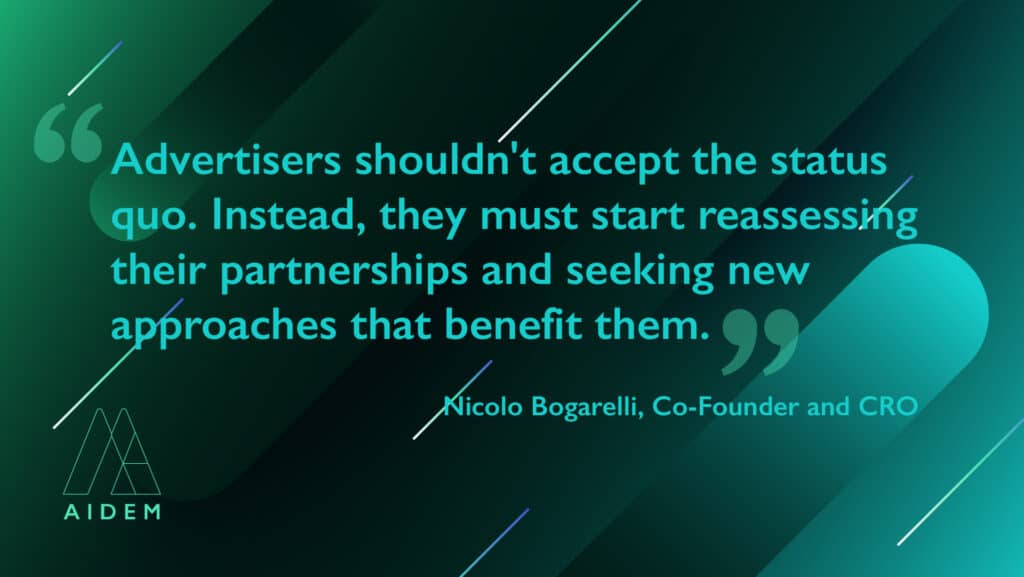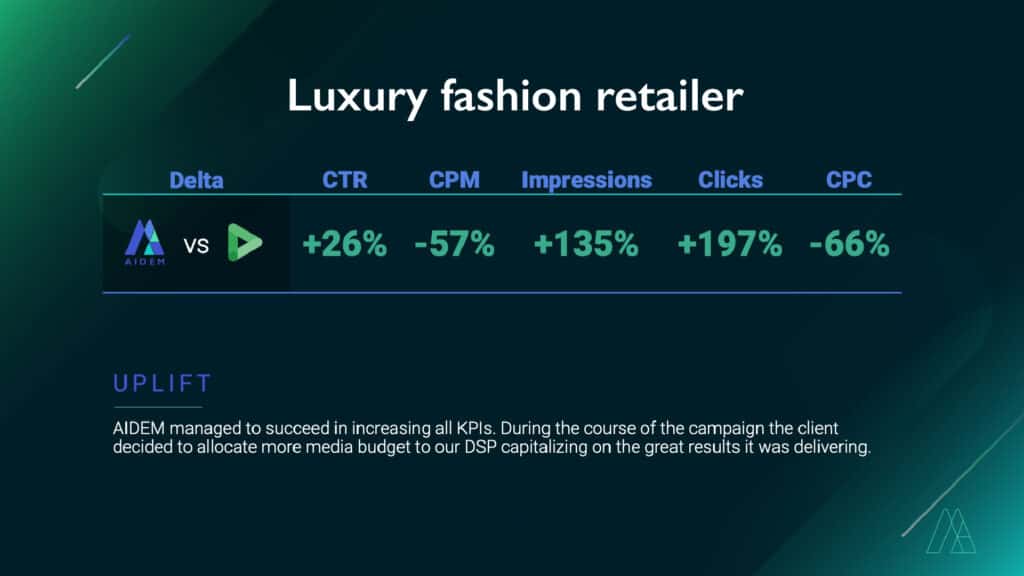Nicolo Bogarelli, Co-Founder and CRO
When ad tech intermediaries swallow up 60% of a brand’s digital ad budget, you know the system is broken. As each party takes their cut, working media declines, fewer ads can be bought and campaign effectiveness is compromised. At the same time, publishers receive just a fraction of the spend they should. So, while the middlemen gain, the critical players – the buyer and seller – lose out.
But it doesn’t need to be like this. And by addressing ad tech’s inherent issues around opaque practices, both brands and publishers can reap the rewards they deserve.

You’re in the dark with black boxes
The challenge for any advertiser buying through programmatic media is understanding what happens to their budget. How much of it really makes its way to the publisher? What proportion actually goes on buying media – its intended purpose – compared to the sums pocketed in fees by other vendors?
It’s only natural that advertisers question what they are paying, where it’s going, and the value any middleman delivers. But in many cases, these buying platforms are black boxes, so there’s no way of knowing the truth about what’s happening behind the scenes.
On average, for every £1 a brand invests in its digital advertising, only 40p finds its way to the publisher. 60p goes to undisclosed intermediaries – encompassing everything from brand safety and ad verification through to data and ad serving. Often, it’s impossible to identify how much each one is taking. And even more worrying is that past research has identified that 15% of this spend actually goes missing and therefore can’t be attributed at all.
This is unbelievable. It represents a 60% tax on digital ad budgets. What other industry would accept this as a way of doing business? It’s something that’s been going on for too long. But there is a better way, and it comes down to more transparency and less complexity.
Bringing the buyer and seller closer
First, we need to go back to basics and embrace openness. Any party involved in the digital advertising process should be upfront in disclosing the fees they take. After all, we’re talking about business relationships, which must be built on trust and honesty. It’s the very least we should expect. AIDEM, for example, makes a 25% margin.
Secondly, we must remove the plethora of vendors standing between the advertiser and the publisher. What’s critical is to bring buyers and sellers closer together by simplifying the supply chain, so it encompasses them and, ideally, just one other entity. It’s a case of reverse engineering the current process and offering an integrated technology solution that delivers what buyers and sellers need without relying on multiple stand-alone supporting solutions.
The very act of removing intermediaries makes a considerable difference to advertisers and publishers. If, by doing so, the margin reduces from 60% to 25%, an advertiser’s working media doubles in one fell swoop. For the advertiser, this releases significant budget which can be channelled into buying media. And meanwhile the publisher’s share of the budget increases by 88%.
Even without taking into account campaign optimisation, the more money that goes to the publisher, the more eyeballs the advertiser gets in return – and more eyeballs mean better results. When you then factor in AI to optimise ad placements, this leads to even stronger performance. Both parties win.

This is demonstrated well by an A/B campaign test we ran for a luxury fashion retailer. By reducing complexity and take rates, it saw impression volumes increase by 135%, CPM rates fall by 57%, clicks rise by 197%, and CPC rates decline by 66% across our DSP, compared to Google DV360. The result was the retailer saw increases across all its campaign KPIs.
Advertisers shouldn’t accept the status quo. Instead, they must start reassessing their partnerships and seeking new approaches that benefit them.
Embracing price transparency, shortening digital advertising supply chains and removing unnecessary margins change the nature of the game. Doing so disrupts current approaches positively by delivering more effective campaigns for brands and higher revenues for publishers. And attacking this needless complexity also reduces opaqueness, helping bolster brands’ trust in digital advertising at a time when marketing budgets are under pressure.






